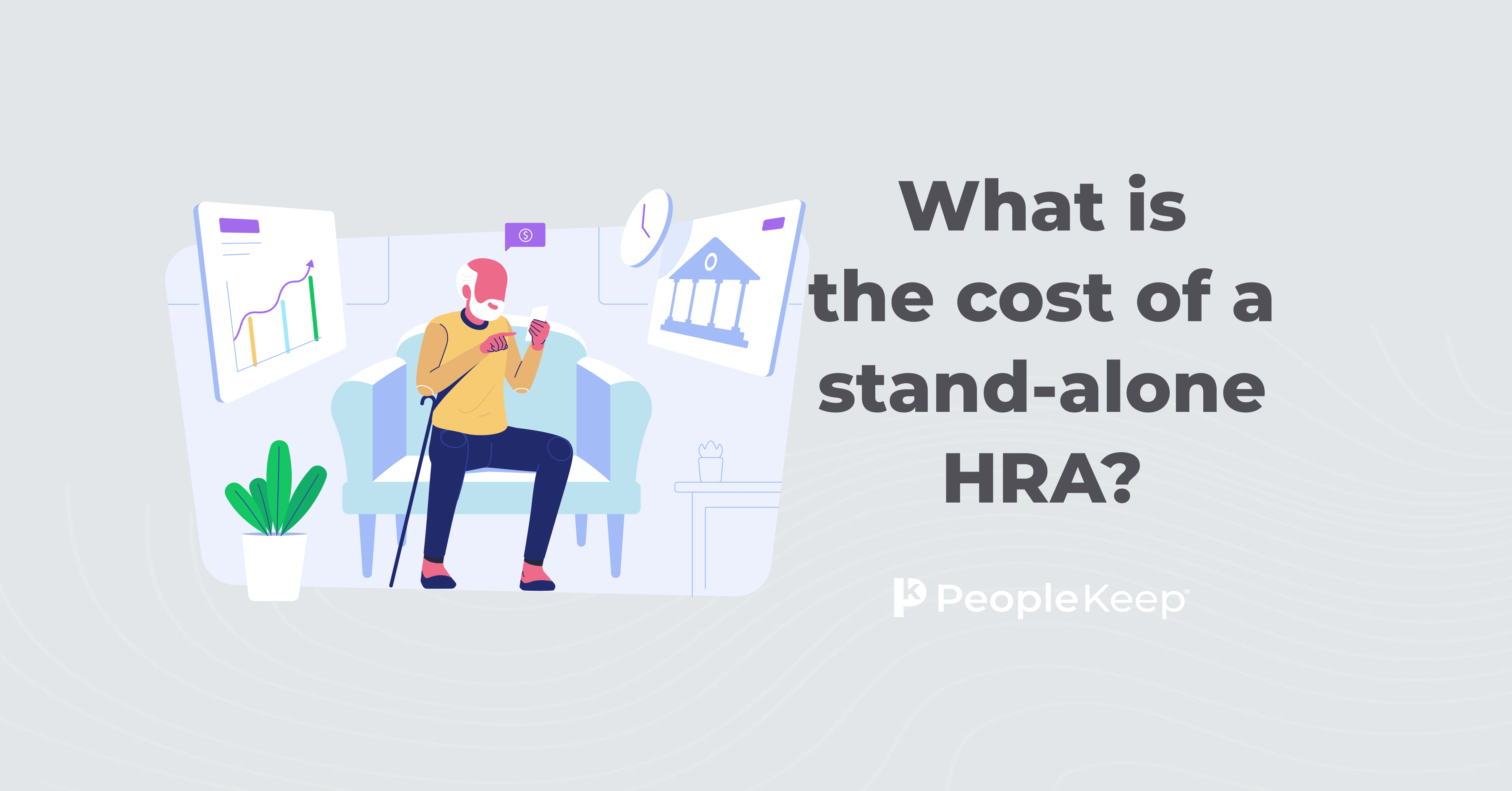The QSEHRA: Pros and cons
By Elizabeth Walker on July 22, 2024 at 8:55 AM
A robust benefits package that includes health coverage is an important recruiting tool for every employer. However, soaring medical costs can make offering health benefits challenging for small business owners with limited budgets. Luckily, health reimbursement arrangements (HRAs)— specifically the qualified small employer HRA (QSEHRA)—can help small employers overcome this challenge.
With a QSEHRA, small employers can reimburse employees tax-free for qualifying medical expenses, including individual insurance premiums. QSEHRAs are budget-friendly for employers and flexible for employees, making them a stand-out benefit option. But before determining if a QSEHRA suits you and your employees, you must consider the pros and cons.
In this blog, we’ll briefly review how the QSEHRA works and discuss the pros and cons you need to know before implementing it at your company.
Takeaways from this blog post:
- The QSEHRA is a tax-advantaged benefit option for small employers, providing flexibility and control over budget and benefit design.
- With a QSEHRA, employers avoid minimum participation requirements. Employees can also choose their preferred health insurance plan.
- QSEHRAs have many advantages but may only be suitable for some organizations due to maximum contribution limits, employee challenges with premium tax credit coordination, and business owner eligibility requirements.
How does a QSEHRA work for small employers?
The QSEHRA is for small employers with fewer than 50 full-time equivalent employees (FTEs). Unlike traditional group health insurance, where employees only have the option of whether or not to enroll in an employer-selected policy, the QSEHRA allows employees to choose the individual plan that works best for them and their families.
Once an employee purchases an insurance policy and pays their premium, their employer reimburses them for their health insurance premium and other out-of-pocket medical expenses, like copayments, prescription drugs, preventive care, and more.
QSEHRAs are employer-owned, and only the employer can contribute to them. While they have no minimum contribution limits, the IRS updates annual maximum contribution limits for individuals and families.
Employees must have a health plan that meets minimum essential coverage (MEC) standards to participate.
Here are the basics of how a QSEHRA works:
- An employer sets a monthly allowance for eligible employees to spend on medical services and items.
- When an employee purchases an eligible expense, they submit proof of purchase, typically in the form of a receipt or invoice.
- Once the employer verifies and approves the cost, they reimburse the employee up to their allowance amount.
- When an employee hits their monthly allowance limit, they can’t exceed it. They must wait until the following month to receive more allowance and reimbursements.
Our 2024 QSEHRA Report shows that 76.8% of small employers offering a QSEHRA through PeopleKeep are offering it as a first-time benefit. Because of this more modern health benefit, more small businesses can give their employees and their families access to healthcare without dealing with the high costs, limited plan options, and group health insurance participation requirements.
What are the pros of a QSEHRA?
A QSEHRA is an excellent option for small employers for many reasons. Below are a few of its key advantages.
Here are some pros of the QSEHRA:
- It has tax advantages: The QSEHRA is a pre-tax benefit, offering many tax advantages for employers and employees. Reimbursements are tax-deductible for employers and exempt from FUTA, FICA, and payroll taxes. Employee reimbursements are income tax-free, reducing their overall tax liability.
- It gives small business owners more control: Because QSEHRAs are a flexible, defined-contribution benefit, you have more control over your budget and how you can design the benefit. There’s no minimum contribution limit, no annual rate hikes, and you only pay out reimbursements when your employees submit proof of a qualified purchase. Lastly, unused funds stay with you when an employee leaves your company.
- It doesn’t have minimum participation requirements: If you have at least one W-2 employee, you can offer a QSEHRA. Additionally, all full-time W-2 employees with MEC are automatically eligible to participate. You can also add your part-time workers to the benefit, as long as you give them the same allowance as your full-time employees.
- They’re flexible: One of the best perks of the QSEHRA is its flexibility. For example, you choose if you only want to allow reimbursements for insurance premiums or also permit other out-of-pocket costs. You can also make benefit design or allowance changes at the plan year's end. Lastly, employees can choose the insurance policy and healthcare items they want instead of being bound to a traditional plan’s covered services.
- You can manage your benefit using HRA administration software: You don’t have to work with an insurance company to use a QSEHRA. However, you must follow QSEHRA compliance requirements, such as creating legal plan documents, reviewing employee documentation for reimbursements, and notifying your staff of benefit changes. But you don’t have to do it alone. HRA administration software allows you to manage the most time-consuming tasks quickly and easily while still staying compliant.
- Remote employees can participate regardless of location: Employees who work remotely can participate in the QSEHRA without any administrative or compliance roadblocks. No matter their location, your employees can still choose individual health coverage from a public marketplace, local insurer, or broker and receive reimbursements when they incur an eligible expense. This allows all your staff to take advantage of the benefit equally, improving employee satisfaction and morale.
- They help you attract and retain employees: Offering quality health benefits remains an important consideration for employees. Our 2024 Employee Benefits Survey found that 92% of employees value having health benefits. By offering a QSEHRA, you can highlight having a personalized health benefit in your job listings, improving your recruiting efforts and the chance they’ll remain at your company long term.
What are the cons of a QSEHRA?
While the QSEHRA has several advantages, it may only meet the needs of some organizations. Considering the cons can help you determine if this health benefit is the best choice for you and your employees.
Some potential downsides to a QSEHRA include the following:
- There are maximum contribution caps: In 2026, employers can offer a maximum annual allowance of $6,450 for single employees and $13,100 for employees with a family. If you have a big budget and want to provide your staff with more money than these amounts, you can offer an individual coverage HRA (ICHRA), which functions very similarly to a QSEHRA.
- Limited employee class customization options exist: Some types of HRAs allow business owners to offer different employee allowance amounts based on job-specific criteria, like full-time or part-time status. However, QSEHRAs only enable small employers to vary allowances based on family status, such as if the employee is married or single.
- Coordinating with premium tax credits can be challenging: Employees receiving premium tax credits can participate in a QSEHRA. However, they must coordinate their credits with the HRA based on affordability, which can confuse first-timers. If an employee’s QSEHRA meets affordability thresholds for one month, they can’t collect their credits for that month. They can collect their tax credits if they’re eligible and their HRA isn’t affordable for one or more months. But, they must reduce their credit by their allowance amount.
- Employees without MEC can’t participate: Small employers are only eligible for a QSEHRA if they don’t offer any other type of group health coverage at their organization—including group ancillary coverage. Also, only employees with health coverage that meets MEC can participate in the benefit. Those with an alternative policy—like a healthcare sharing ministry, short-term policy, or other limited coverage plan—are ineligible as they don’t provide MEC. However, offering a QSEHRA creates a special enrollment period where your employees can buy a qualifying plan with MEC to take advantage of the benefit.
- Self-administration can lead to pitfalls: Self-administrating a QSEHRA is possible. However, it can be complex and time-consuming and result in compliance errors, exposing you to costly IRS penalties. The idea of self-administration may discourage some employers from choosing a QSEHRA. However, HRA administration software can lessen the burden and make the process more manageable.
- Only some business owners are eligible: Business owner HRA eligibility depends on how they file taxes. C corporation owners can participate in a QSEHRA, but sole proprietors, S corporation shareholders, and partners are ineligible. However, if a sole proprietor or partner’s spouse is a W-2 employee of their company, they can use their spouse’s HRA allowance as an eligible dependent and receive reimbursements.
Conclusion
Unlike traditional group health plans, a QSEHRA is an affordable option for small business owners to help attract and keep their employees without breaking their budget. But like all employee benefits, it’s vital to understand its pros and cons before adding one to your compensation package. After considering the information in our article, you’ll be on your way to making an informed decision about offering a personalized QSEHRA at your company.
If you want to offer a QSEHRA using benefit administration software, contact us at PeopleKeep. We can help you compliantly manage your health benefit in minutes per month so you can focus on running your business and caring for your employees.
This article was originally published on November 29, 2018. It was last updated on July 22, 2024.
Check out more resources
See these related articles

What is a QSEHRA?
Looking for information on QSEHRAs? This guide provides a clear understanding of qualified small employer health reimbursement arrangements (QSEHRAs).

What is the cost of a stand-alone HRA?
Looking to budget for a stand-alone HRA? Get all the information you need on pricing and expenses in this comprehensive guide.

QSEHRA rules you need to know
Stay compliant with QSEHRA rules by familiarizing yourself with the requirements in this beginner-friendly guide. Start simplifying your healthcare benefits.



